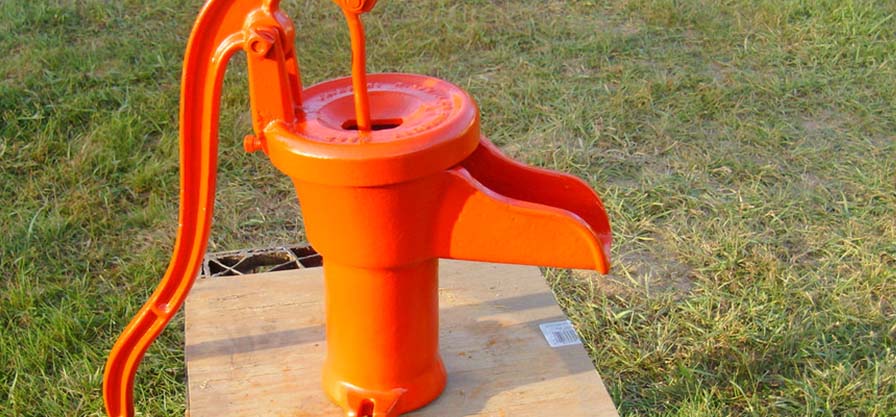Table of Contents
Hand pumps have allowed people to extract water from underground for hundreds of years.
While naturally operated pumps are used widely in the developing world, there’s always a place for a manual pump at home whether you’re a prepper or just enjoy having a solid backup.
With today’s pitcher pump reviews, we’ll explore 5 of the most effective hand pumps on the market so you’ll never run out of water again.
5 Best Pitcher Pump Reviews
We’ll look at what a pitcher pump does and how it works in a little more detail after our reviews…

The Simmons PM500 No. 2 is the iconic pitcher pump that still sells out the world over.
Whether you want this pump as a back-up water supply or to pop into your pond as a decorative feature combined with a pump, you’ll get a versatile pitcher pump at a price you’ll love.
Finished in commanding fire hydrant red, this cast-iron pump looks great in any garden or water feature whether traditional or more modern.
While the 25-feet lift is not world-beating, this is a great multipurpose pitcher pump suitable for most regular needs from an industry legend.
Pros.
- Cast iron construction for maximum durability as well as making a striking statement in the garden
- Absolutely lead-free for your peace of mind
- Measures 8 x 8 x 16 inches weighing less than 7 pounds so pretty compact considering performance
- 25 feet maximum vertical lift although you might be able to stretch a few feet further
- Works well with a pump in a landscape water feature
Cons.
- Leather piston could be a bit tighter
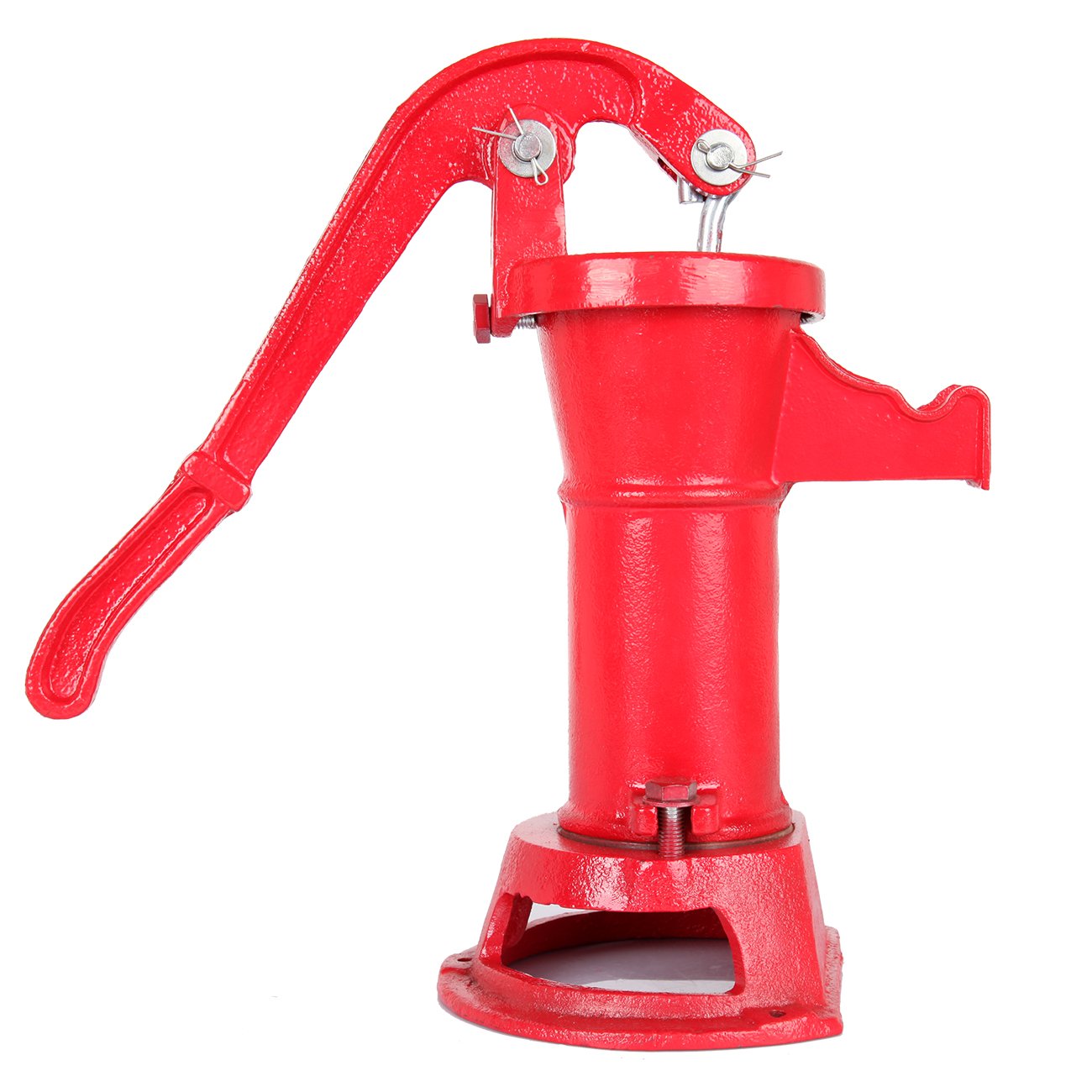
Most pitcher pumps are very similar and this Ridgeyard looks and performs much like the classic Simmons above…
You’ll get the same bright red colorway and the same rugged cast-iron build.
Lift depth is the same, too, at 25 feet so you’ve got everything you need from a manual pump at this price-point.
When you think about it, though, you don’t want a pitcher pump that tries to reinvent the wheel. You want one like the Ridgeyard that gets the job done effectively and comes in at a reasonable price.
Pros.
- Like most of the best pitcher pumps, made from cast iron so built to stay the distance while also looking the part
- Standard 1 ¼-inch NPT connection for pipes
- Measures up at 17 x 11 x 9 inches and tips the scale at 10 pounds
- Maximum vertical lift rated at 25 feet which is the benchmark for pumps in this class
- Fantastic to ensure you always have access to water even if you need to filter it
Cons.
- A pretty bulky pitcher pump

Yet another rock-solid pitcher pump at a very affordable price, this cast iron 14 ½-pound beast from Water Source is a strong contender for the best budget pitcher pump.
As with all the best hand pumps, you’ll get plenty of cast iron and no lead. Aside from filtering or purifying your water, you’ve got no worries.
You won’t need to prime your pump after every use so unless you leave it for extended periods, operation is blissfully stress-free.
Aside from a few complaints about battered packaging or missing components, this pitcher pump delivers across the board and costs far less than you might imagine.
Pros.
- Bright red cast iron build will return many happy years of service
- No lead so all you need to worry about is filtering your water
- 16 x 8 x 8 inches and 14 ½ pounds
- Draws water from up to 25 feet deep
- Only needs priming after lengthy spells of disuse
Cons.
- A few issues with quality control so check package carefully upon arrival
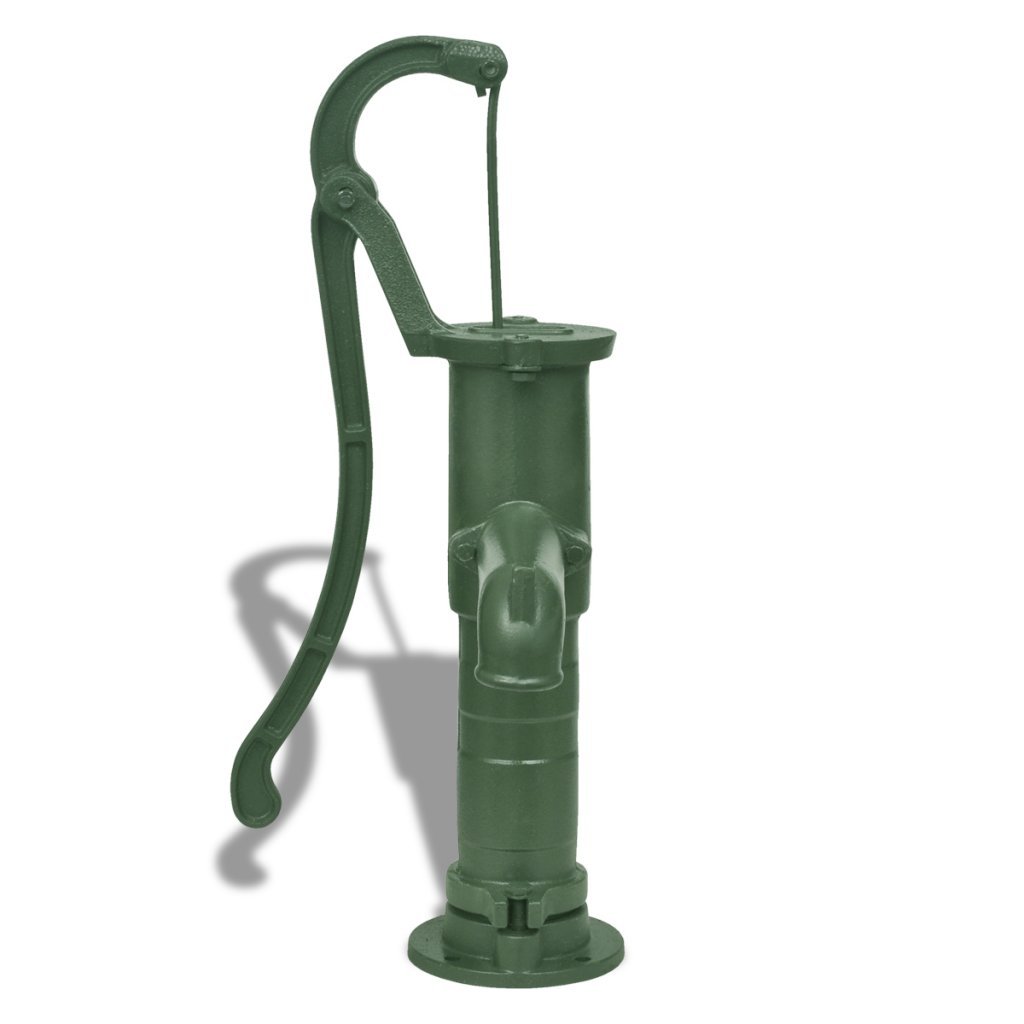
As we edge to the close of our pitcher pump reviews, the green Anself is a sea change from the standard red.
This pump is a bit bigger and heavier than many of the others we reviewed so make sure you’ve got room to accommodate.
You’ll get a vertical lift of 26 feet giving you class-leading performance at a very respectable price.
It’s tough to find any distinguishing features with pitcher pumps. It’s perhaps the coloring of this Anself that makes it stand out in a glut of red pumps.
Make sure you buy the pipe needed to get up and running which is straightforward with all fittings provided.
For a no-nonsense pitcher pump that punches above its weight, road test this green giant today and never run out of water again.
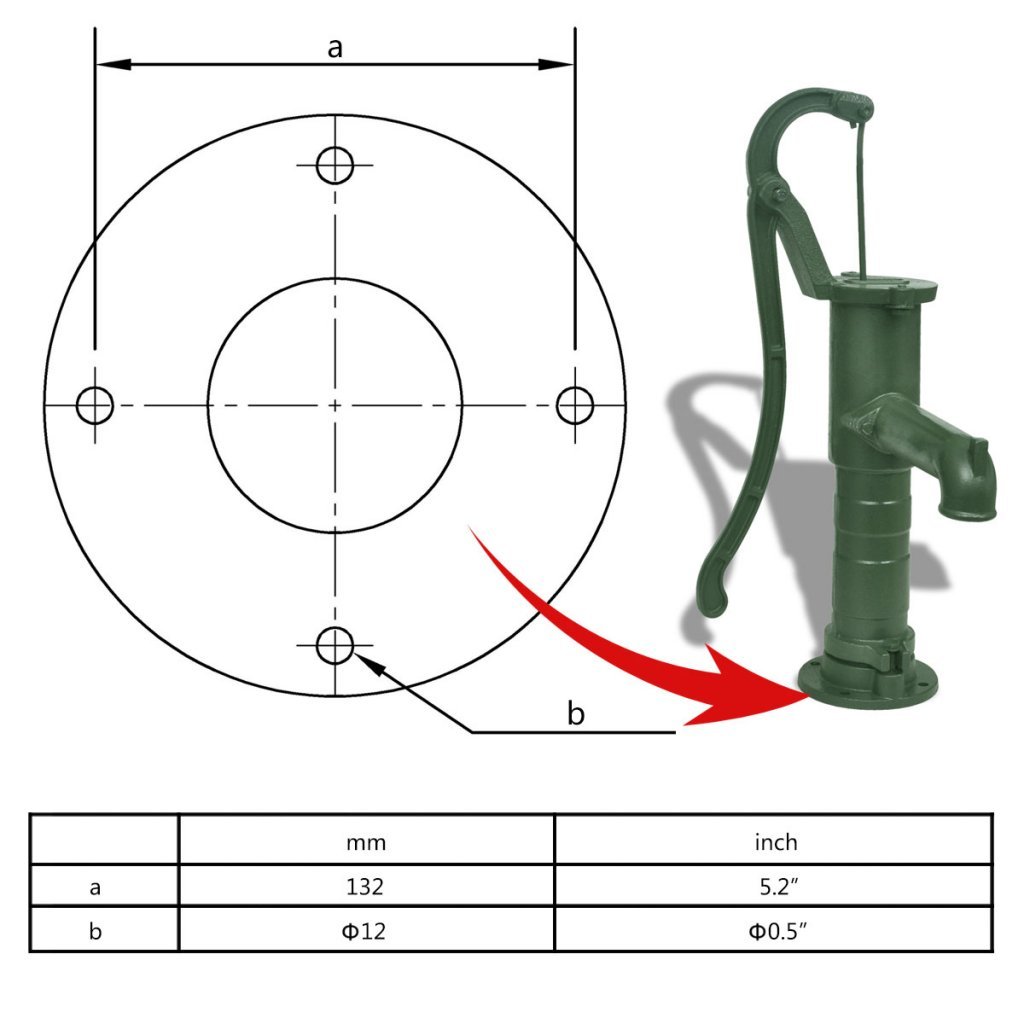
Pros.
- Made from cast iron and finished in muted green so looks great in any garden
- Absolutely lead-free for your peace of mind
- Weighing in at 30 pounds, this is quite a heavyweight pump
- Enhanced 26-feet vertical lift although you might be able to stretch a few feet further
- Simply hook up stainless steel or PVC pipe using female fitting provided for simple assembly
Cons.
- Connecting pipe is not included and must be purchased separately
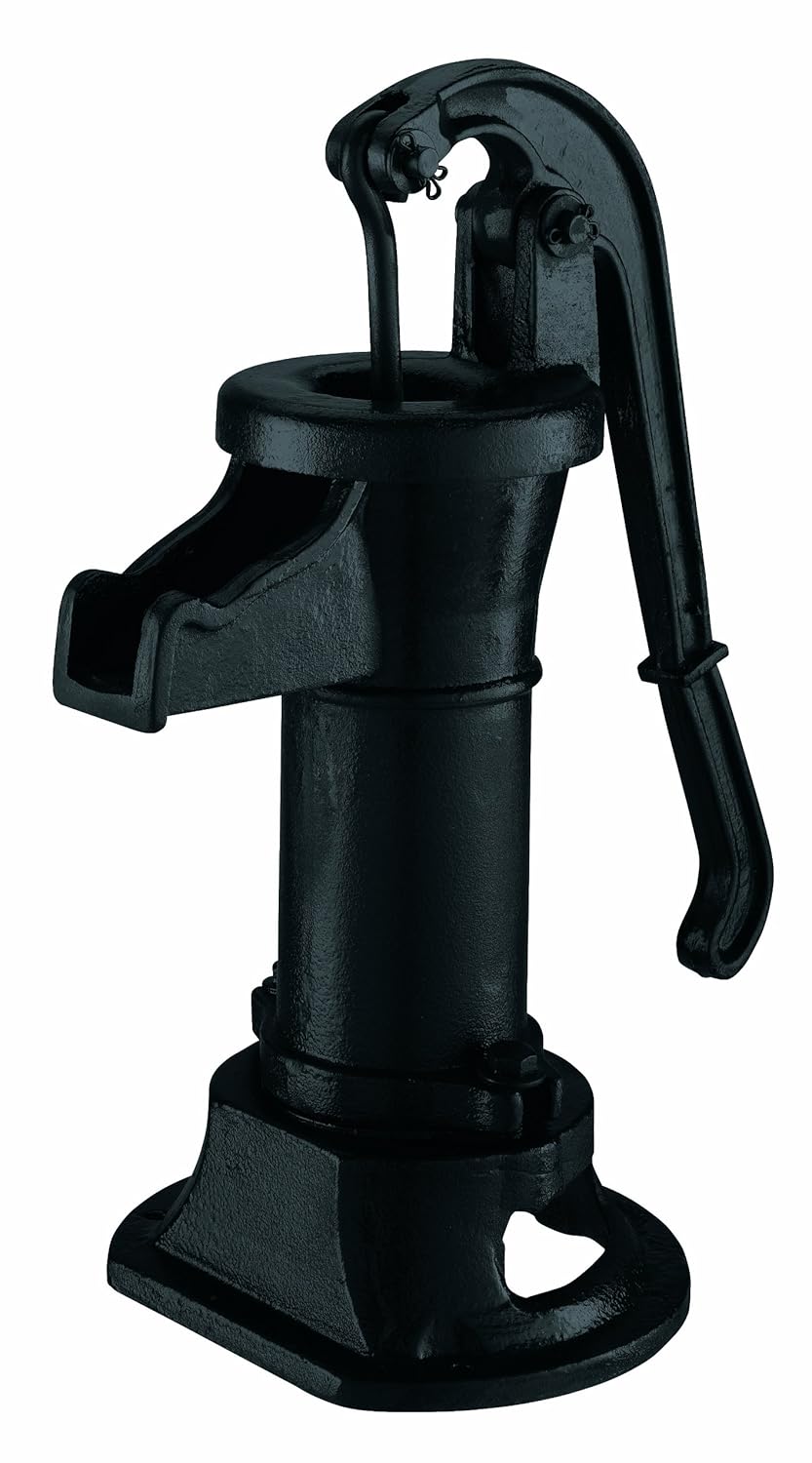
Last but not least in our pitcher pump reviews is an understated black beauty from Parts20.
Perfect for all shallower wells of 25 feet or less, you can draw up water with relatively little effort regardless of what’s going on with the main supply.
Quite compact but reasonably heavy, this unit comes packing a 90-day guarantee which is more than you’ll get with many pitcher pumps these days.
For a dependable and affordable pitcher pump that looks great without compromising performance, it’s got to be Parts20.
Pros.
- Highly durable cast iron finished in a minimalist black
- Absolutely lead-free for your peace of mind
- Measures 7 x 7 ½ x 14 ½ inches and 14 pounds
- Expressly designed for use in shallow wells of 25 feet or less
- 90-day warranty for your peace of mind
Cons.
- Quite an expensive pitcher pump compared to the competition
OK ...
Now you’re done with our pitcher pump reviews and you have a decent overview of the options at your disposal, we’ll give you a brief glimpse at the history of this neat device and how it works to keep water coming even when you’ve got problems with the main supply…
Pitcher Pump Background
A pitcher pump, sometimes called a parish pump, is a hand-powered water pump that was standard in the days before proper piped water supplies.
Since you’re drawing water straight from the soil with a pitcher pump, there’s some risk of contamination. It’s key that you filter or purify the water you extract using a pitcher pump to avoid the chance of waterborne diseases.
As well as their use in the home, the pitcher pump is still used worldwide as sustainable delivery method for water in developing countries.
How, exactly, do pitcher pumps work?
How Does a Pitcher Pump Work?
Pitcher pumps come with a long handle that you push up and down rapidly to operate.
This handle connects to a piston featuring a hole in the middle and a hinged metal flap.
With no water in the pipe, pulling down on the handle raises the piston leading to a drop in pressure. Air from the surface starts coming down to compensate and pushes the flap over the hole to seal the piston. Pressure continues to drop.
Pushing the handle up leads to an increase in pressure.
After cycling few a through ups and downs, water will come up the pipe to the stationary plate. Water is drawn until it’s lifted up and out of the faucet.
A Final Word
We hope with that whirlwind tour, you’ve now got the best pitcher pump for your needs lined up and you can save time while making sure you’ve always got access to water whatever happens to the main supply.
Drop us a line any time with your questions or feedback. We love to hear from our readers and we’re always happy to help in any way we can.
Come back soon!
